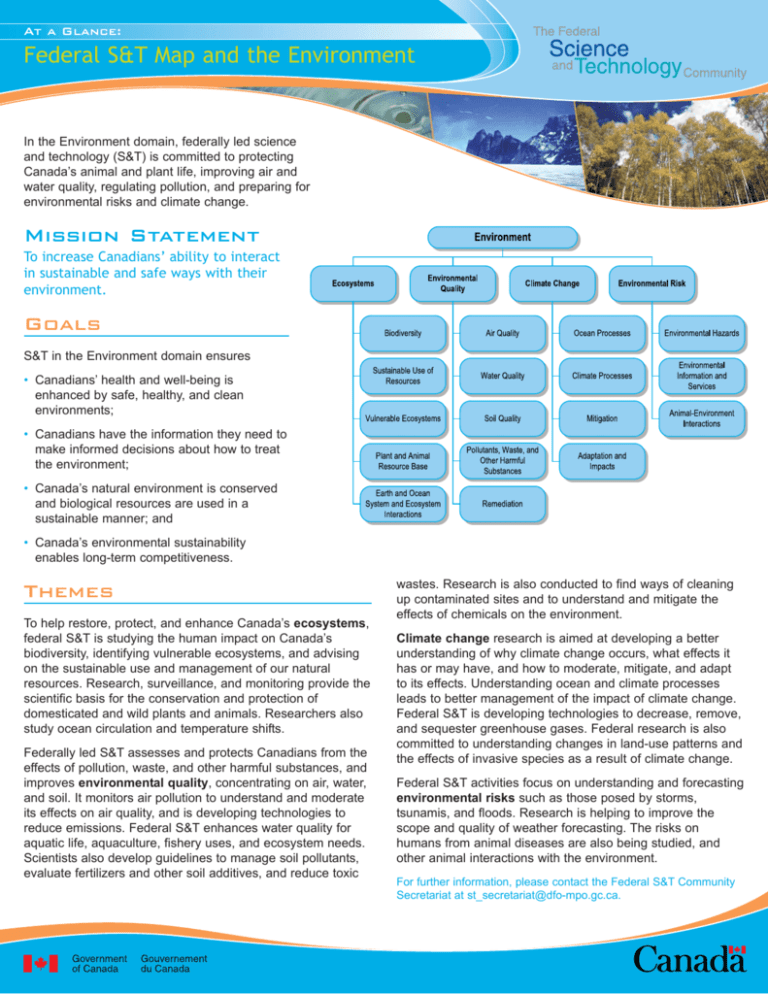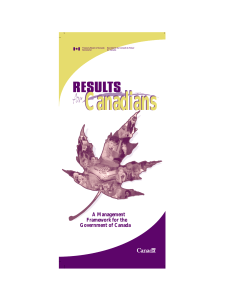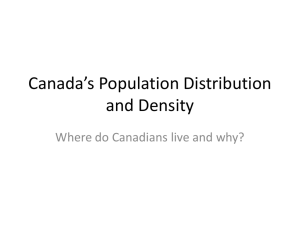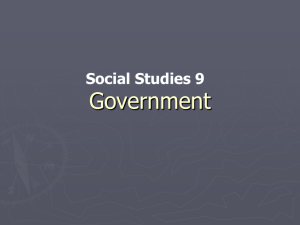Federal S&T Map and the Environment MiSSiON STATEmENT
advertisement

Federal S&T Map and the Environment In the Environment domain, federally led science and technology (S&T) is committed to protecting Canada’s animal and plant life, improving air and water quality, regulating pollution, and preparing for environmental risks and climate change. Mission Statement To increase Canadians’ ability to interact in sustainable and safe ways with their environment. Goals S&T in the Environment domain ensures • Canadians’ health and well-being is enhanced by safe, healthy, and clean environments; • Canadians have the information they need to make informed decisions about how to treat the environment; • Canada’s natural environment is conserved and biological resources are used in a sustainable manner; and • Canada’s environmental sustainability enables long-term competitiveness. Themes To help restore, protect, and enhance Canada’s ecosystems, federal S&T is studying the human impact on Canada’s biodiversity, identifying vulnerable ecosystems, and advising on the sustainable use and management of our natural resources. Research, surveillance, and monitoring provide the scientific basis for the conservation and protection of domesticated and wild plants and animals. Researchers also study ocean circulation and temperature shifts. Federally led S&T assesses and protects Canadians from the effects of pollution, waste, and other harmful substances, and improves environmental quality, concentrating on air, water, and soil. It monitors air pollution to understand and moderate its effects on air quality, and is developing technologies to reduce emissions. Federal S&T enhances water quality for aquatic life, aquaculture, fishery uses, and ecosystem needs. Scientists also develop guidelines to manage soil pollutants, evaluate fertilizers and other soil additives, and reduce toxic wastes. Research is also conducted to find ways of cleaning up contaminated sites and to understand and mitigate the effects of chemicals on the environment. Climate change research is aimed at developing a better understanding of why climate change occurs, what effects it has or may have, and how to moderate, mitigate, and adapt to its effects. Understanding ocean and climate processes leads to better management of the impact of climate change. Federal S&T is developing technologies to decrease, remove, and sequester greenhouse gases. Federal research is also committed to understanding changes in land-use patterns and the effects of invasive species as a result of climate change. Federal S&T activities focus on understanding and forecasting environmental risks such as those posed by storms, tsunamis, and floods. Research is helping to improve the scope and quality of weather forecasting. The risks on humans from animal diseases are also being studied, and other animal interactions with the environment. For further information, please contact the Federal S&T Community Secretariat at st_secretariat@dfo-mpo.gc.ca.











